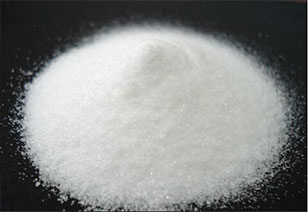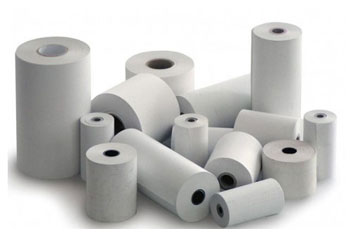Sensitizer BON for thermal paper
 The BON (CAS: 613-62-7) is a sensitizer for thermal paper. The BON has some other names, such as 2-(Phenylmethoxy)-naphthalene, 2-Phenylmethoxy naphthalenen, Benzyl 2-naphthyl ether, Naphthalene, 2-(phenylmethoxy)- and so on. The BON (CAS: 613-62-7) will be combined with ODB-2 (CAS: 89331-94-2) for producing the thermal paper. Our clients always order our BON and ODB-2 at the same time.
The BON (CAS: 613-62-7) is a sensitizer for thermal paper. The BON has some other names, such as 2-(Phenylmethoxy)-naphthalene, 2-Phenylmethoxy naphthalenen, Benzyl 2-naphthyl ether, Naphthalene, 2-(phenylmethoxy)- and so on. The BON (CAS: 613-62-7) will be combined with ODB-2 (CAS: 89331-94-2) for producing the thermal paper. Our clients always order our BON and ODB-2 at the same time.
The BON, with its CAS registry number 613-62-7, has the IUPAC name of 2-phenylmethoxynaphthalene. The appearance of BON is white or light yellow powder. It is nearly insoluble in all solvents. And its product categories are including industrial or fine chemicals, color former & related compounds, functional materials, and sensitizer. What’s more, it may cause long-term adverse effects in the aquatic environment, so you should avoid releasing to the environment and then could refer to special instructions.
BON Specification:
| Item | Standard |
|---|---|
| Appearance | White crystalline |
| Purity | ≥ 99% |
| Loss on drying | ≤0.5% |
| Melting point | 100℃~103℃ |
The shelf life of BON is 24 months. BON is not a dangerous goods according to transportation regulation. The package of BON is 25 kgs/paper drum or as customer’s request. The BON need to stock it in dry, cool and well-ventilated place.
The BON can be used as thermal paper sensitizer for the production of thermal paper (thermal paper coating, thermal recording paper, thermal carbon paper, instrumentation in the scale of the recording paper to a variety of receipts, invoices, etc.), and medicine , and widely used as synthetic fragrances, for soap flavor, cosmetics flavor, flavor and blending flavors, such as straw. BON can be applied in the conventional way as a sensitizer by the application of an aqueous coating composition to a pre-coated base paper followed by drying and calendaring. The coating composition will also contain appropriate amounts of various additives including for example color former and color developer.
What’s the thermal paper?
 Thermal paper is a special fine paper which is coated with a chemical (previously often containing BPA) that changes color when exposed to heat, without the use of traditional ink. This effect is achieved by coating the paper with heat-sensitive dyes and developers during the manufacturing process. The exact composition of this chemical coating varies widely based on the coating facility, but usually shares a few basic similarities. It is used in thermal printers and particularly in inexpensive or lightweight devices such as adding machines, cash registers, and credit card terminals.
Thermal paper is a special fine paper which is coated with a chemical (previously often containing BPA) that changes color when exposed to heat, without the use of traditional ink. This effect is achieved by coating the paper with heat-sensitive dyes and developers during the manufacturing process. The exact composition of this chemical coating varies widely based on the coating facility, but usually shares a few basic similarities. It is used in thermal printers and particularly in inexpensive or lightweight devices such as adding machines, cash registers, and credit card terminals.
The solid-state mixture of a dye and a suitable matrix coats on the surface of the paper; a combination of a fluoran leuco dye as an example. When the matrix is heated above its melting point, the dye reacts with the acid, shifts to its colored form, and the changed form is then conserved in a metastable state when the matrix solidifies back quickly enough. The reactant acid in thermal paper is often bisphenol A (BPA).
The coating will usually turn black when it is heated, but coatings that turn blue or red are sometimes used. While an open heat source, such as a flame, can discolor the paper, a fingernail swiped quickly across the paper will also generate enough heat from friction to produce a mark.
